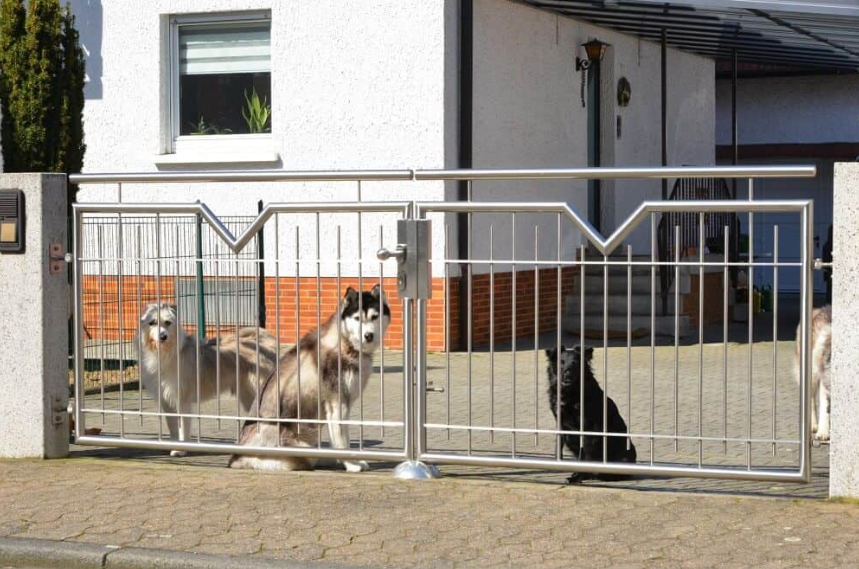Pet-Proof Fencing: Keeping Dogs Safe Without Sacrificing Style
Dogs love exploring, chasing squirrels, and digging up new spots in the yard. A safe outdoor space is not just for comfort, it’s a necessity. Installing pet-proof fencing is one of the best ways to protect your dogs from wandering off or getting into danger without compromising your home’s style. Modern fencing options now combine strength, security, and aesthetics, making it easier to build a beautiful yard that also meets your pet’s needs.
Why a Pet-Safe Fence Matters
Dogs are curious by nature, and their curiosity can sometimes lead to trouble. A well-built fence keeps them from escaping, chasing cars, or approaching unfamiliar animals. It also gives them the freedom to roam safely within your property. For families with multiple pets, a fence offers peace of mind and a clear boundary for playtime.
The right fence doesn’t just stop your dog from leaving; it protects your yard from outside threats. Stray animals, pests, or even neighborhood dogs can be kept out. This added layer of safety helps maintain a clean and calm environment for your pets to enjoy.
Choosing the Right Fence Height
Fence height can make or break your dog’s safety. Small breeds like Chihuahuas or Dachshunds may only need a 3 to 4-foot barrier, while large or athletic dogs, such as Labradors or Huskies, require taller fences—around 5 to 6 feet. Jumping and climbing behavior also plays a role.
Chain-link or slatted wood fences can tempt dogs that love to climb. For these pets, solid panels or vertical aluminum slats work better. Avoid horizontal planks since they can act as “steps” for escape attempts. The goal is to create a fence that deters climbing while still looking attractive from both sides.
See also: Top 10 Easy Home Improvement Projects for Beginners
Preventing Digging and Escapes
Some dogs are natural diggers. Breeds like Terriers, Beagles, and Huskies may try to burrow under a fence if they catch an interesting scent. Adding a small trench along the fence line can help. Fill it with gravel, concrete, or buried mesh to prevent tunneling.
Another option is to extend the fence several inches below ground level. Pet owners often use chicken wire or metal mesh buried at an angle to stop persistent diggers. These solutions keep your fence secure without making the yard look industrial or uninviting.
Balancing Style with Function
Pet safety doesn’t mean sacrificing design. Today’s fences come in materials and styles that blend beautifully with any home architecture. Vinyl fencing is smooth, low-maintenance, and available in colors that mimic wood. Aluminum fences offer a sleek, modern look with narrow picket spacing that keeps small dogs from squeezing through.
Wood fences remain a favorite for traditional homes. Cedar or redwood panels bring warmth and privacy while adding a natural touch to your outdoor space. Trex or composite materials combine the texture of wood with durability that stands up to chewing, scratching, and weather exposure.
Adding decorative tops, lattice accents, or unique post caps can transform a basic fence into a statement feature. You can also mix materials—such as combining wood panels with metal frames—for a modern twist that still keeps pets safe.
Considering Visibility and Privacy
Some dogs bark at anything they see moving outside the fence. A solid or semi-private design can reduce that visual stimulation. Vinyl and wood panels block direct views, helping calm anxious dogs and making your yard feel more peaceful.
However, dogs that enjoy watching their surroundings may benefit from partial visibility. Aluminum or ornamental iron fences allow airflow and sightlines while maintaining safety. Choosing between solid and open designs depends on your pet’s temperament and your desired level of privacy.
Durability and Low Maintenance
Weather, moisture, and your dog’s behavior all affect how long a fence lasts. Vinyl and aluminum require the least upkeep. They resist rust, rot, and scratches, making them smart investments for busy pet owners. Wood fences need more attention but offer timeless charm. Regular sealing, cleaning, and painting help maintain their appearance for years.
Chew-resistant materials are also important. Some dogs gnaw at wooden boards or plastic panels. Choosing metal or composite materials can reduce that risk. High-quality hardware, such as reinforced hinges and latches, keeps gates secure and prevents accidental openings during rough play.
Climate and Material Considerations
Climate plays a big role in fence longevity. Areas with heavy rain or humidity benefit from vinyl or aluminum since these materials resist moisture and rust. Wood may warp or discolor in constant dampness, so sealing and routine checks keep it looking new. In dry or hot regions, composite fencing stands up well to heat and sunlight without fading.
Selecting materials that fit your local weather keeps maintenance simple and prevents future repair costs. Matching colors and textures with your outdoor space adds balance and harmony. A well-chosen fence can frame your garden or patio beautifully while protecting your pets year-round.
Matching Fence Design with Your Home
A fence should look like part of your property, not an afterthought. Homes with modern lines often pair best with sleek aluminum or composite fences. Traditional houses fit well with classic wood or vinyl panels in natural tones. You can also personalize your fence by adding subtle details, such as trim pieces or alternating panel patterns.
Lighting can elevate your design at night. Soft LED post lights or low path fixtures create a warm glow while improving visibility during evening walks with your dog. Mixing functionality with visual appeal makes your outdoor space inviting at all hours.
Professional Installation and Custom Options
Installing a fence may look simple, but it involves more than digging holes and setting panels. Professionals handle measurements, gate alignment, and terrain adjustments to make the structure stable and level. They also help choose pet-friendly layouts that suit your yard size and slope.
Custom options let you tailor height, spacing, and material thickness to your dog’s behavior. Gates can feature self-closing latches or locks placed higher up to prevent accidental escapes. Some owners even add small viewing windows for curious pets, allowing them to peek out safely.
Pet-Proof Fencing combines protection with personality. From sturdy materials to thoughtful design, every detail counts toward building a yard you and your pets will love.






